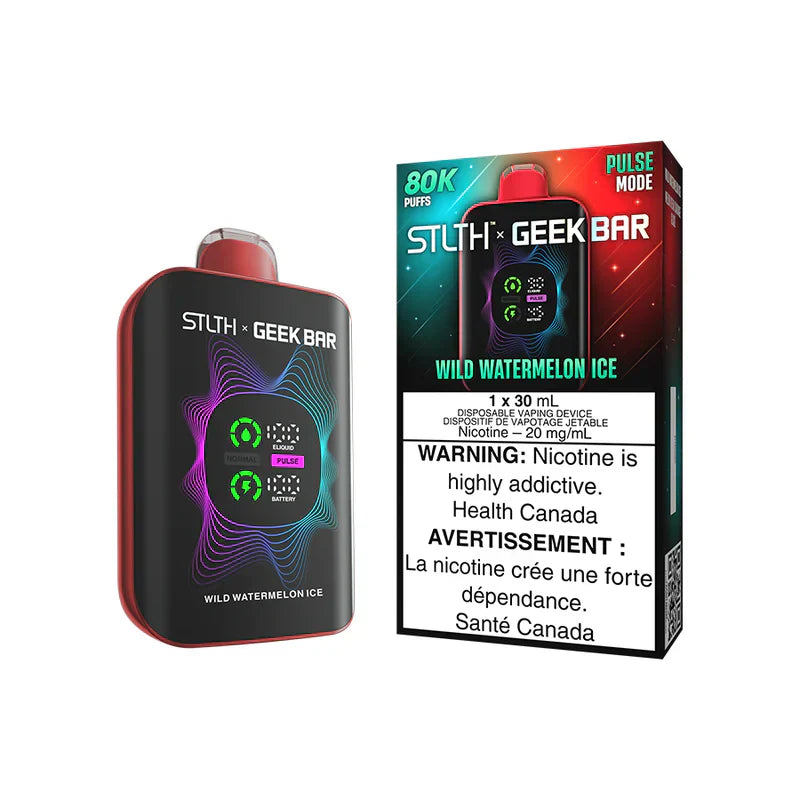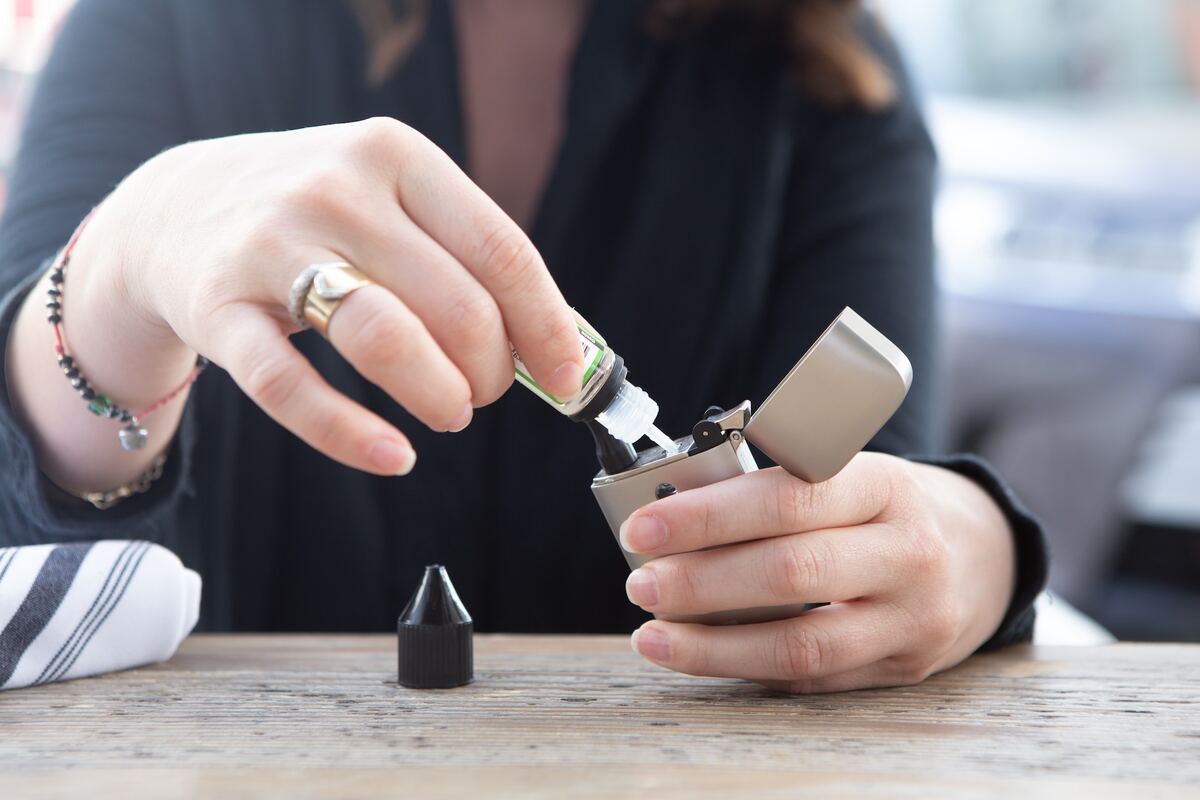There are different types of vape tanks to choose from. Several criteria will determine which option is best for you. Your vaping preferences, the sort of vape juice you'll be using, and the desired nicotine level are all important factors to think about. Let's get straight to the point and cover the fundamentals.
What are Vape Tanks?
The vape tank is the component of your vape or mod that houses the vape juice and the coil responsible for vaporizing it. The majority of vape tanks have a capacity of 2 milliliters or more. Vape tanks come in a wide variety of sizes, colors, and designs. Glass or plastic tanks with metal hardware are common for electronic cigarettes.
Although vape mods are the most common way to use a tank, vape pens with resistances of 1 Ohm or higher can also use a vape tank.
Tanks include a central stem that winds its way from the bottom coil to the top mouthpiece. The liquid in the tank section soaks into the wick, which makes contact with the coil. As soon as you turn on your vape, the coil warms up, turning the liquid in the wick into vapor. After the wick has been refilled by the tank, you can continue vaping.
Some of the first types had a reservoir full of wick material. Subsequent models had a reservoir filled with empty liquid and the coil was originally positioned higher up the device, rather than lower down.
Types of Vape Tanks
Mouth-to-lung (MTL) Vape Tanks
Devices with higher resistance coils, lower wattage outputs, and thinner, 50/50 or PG-centric e-liquids use a process called "mouth to lung," or MTL, for inhalation. The term "mouth-to-lung vaping" in these types of vape tanks refers to inhaling the vapour from an e-cigarette through the mouth and into the lungs.
This type of vape tank is usually recommended for first-time vapers because they resemble the way most people smoke a cigarette. Additionally, MTL Vape Tanks are great for novice vapers because they work with lower-powered vapes and are fashioned after conventional cigarettes.
They use larger concentrations of nicotine in their e-liquid, delivering a more potent punch with each puff. These vape tanks, like their bigger brother in sub-ohm tanks, use replaceable coils, but they prioritize a more compact design.
In general, MTL vaping has these features:
- Less than 20-watt devices (although these are not ideal for "cloud chasing," as they do not generate many clouds).
- Pocket-friendly compared to sub-ohm devices but with fewer capabilities like variable wattage or temperature control due to smaller battery size.
- When the pull is tighter, the mouthpiece becomes more like a mouth-to-lung inhaler.
- The ohmage of the coils is higher than one. Less vapour will be produced by coils with higher resistance.
- Due to inadequate vapour production, higher nicotine concentrations, such as nicotine salts (25-50 mg), are more beneficial.
- Reduced cloud formation means a weaker throat impact. It facilitates continuous vaping sessions.
- Since the vapour from an MTL vaporizer stays in the mouth for a longer period of time, the flavour from it is more intense.
Changing the nicotine concentration, the PG/VG ratio, the wattage/temperature, and the use of certain flavours like pure menthol can all affect the throat hit. Adjusting wattage/temperature, airflow (less air means more vapour), coil type, PG ratio, and e-juice quality are all ways to fine-tune the flavour intensity of your vape.
Direct-to-lung (DTL) Vape Tanks
Powerful components like direct-to-lung vape tanks offer intense flavour when vaping. These types of vape tanks utilize sub-ohm coils, allowing for a direct-to-lung (DTL) vaping technique and significantly increased vapour production.
However, DTL vape tanks are not designed for use with high-nicotine e-liquids due to the enormous clouds of vapour they create. Although if you get a direct-to-lung (DTL) tank and switch to a lower-nicotine e-liquid, you will not be disappointed. You'll still get the right amount of nicotine and be entirely satisfied because of the massive clouds produced by a DTL tank.
A DTL atomizer, like those used on most vape pens and mods, will contain 510 threading. However, before purchasing a DTL vape tank, you should ensure that your vaping device is compatible with the tank's specified wattage range.
If you're using a direct lung (DTL) tank, you'll need a mod that can put out at least 30 watts of power, and occasionally much more. Larger vape mods are compatible with DTL vape tanks. However, you may need to upgrade your vaping device in order to use DTL tanks with a very compact vape pen. Get educated on the topic of sub-ohm vaping.
Innokin has established itself as a leader in the mesh coil industry. For intense flavours and massive cloud formation, the Plex3D coil has a heating surface fabricated from a three-dimensional mesh matrix.
DTL vape tanks typically have the following features:
- Greater cloud creation from high-wattage devices means more e-liquid will be used. Favour a greater VG ratio for a softer inhale and denser vapour production.
- DTL vape mods have larger batteries, therefore the devices themselves have longer battery life compared to MTL vape mods.
- Sub-ohm coils have a resistance of less than one ohm. More clouds are created by coils with less resistance. Depending on the device, DTL mods can use coils with resistances higher than 1 ohm.
- Adjustable airflow allows for a stronger or milder throat hit.
- Larger clouds and a hotter vape at higher wattages mean a more satisfying throat hit. To simulate the sensation of smoking cigarettes, a throat hit is vital in vaping.
- Because of the boost in power, a high nicotine concentration is unnecessary. Using a DTL mod only allows 3–6 mg of nicotine. Nicotine levels above 12 milligrams should be avoided.
- DTL vaping has less flavour because the vapour is inhaled directly into the lung. More air passing through your coils dilutes the vapour, resulting in less flavour but thicker clouds. However, by adjusting wattages/temperature settings, limiting airflow, and experimenting with different coil resistances, one can increase flavour intensity.
Sub-Ohm Vape Tanks
Sub-ohm vape tanks, which typically use a coil resistance of roughly 0.5 ohms in conjunction with a robust tank, provide users with a more flavorful hit, greater strength, and significantly more vapour production than conventional vape pens. The term “sub-ohm” in these types of vape tanks refers to the resistance of the coil being less than 1 Ohm.
Sub-ohm tanks are high-output stock coil tanks with a large capacity. They only last around two weeks of heavy use before the cotton coil needs to be replaced due to charring. They call for a lot of battery life from the mod and e-liquid with a high VG percentage for optimal cloud production.
When compared to devices with a higher resistance, sub-ohm vaping gives a far better flavour experience. The better wick materials combined with increased taste extraction per puff make for a far more enjoyable experience.
Sub-ohming also has the potential to improve the vaping experience by making it more refined or smoother. The sub-ohm vaping mods themselves alter the character of the hit. This is because the tanks used provide a greater wattage, delivering a more potent dose of nicotine to the user. Combining a reduced nicotine concentration with a high vegetable glycerine (VG) e-liquid produces a more satisfying and robust experience.
Sub-ohm vaping is an alternative to smoking cigarettes that offers many of the same benefits. Sub-ohm vape tanks can create warmer vapour, which helps them simulate the feeling of smoking cigarettes.
Temperature Control
Vape mods with temperature control (TC) are a technological answer to the problem of dry, burnt draws. Longer draws produce the same consistent vape because the temperature does not increase. The user sets the upper temperature limit, which is commonly between 300 and 600 degrees Fahrenheit (100 and 315 degrees Celsius).
Tanks designed for use with temperature control (TC) mods are functionally identical to sub-ohm vape tanks except for their coils. Mods using nickel (Ni200), titanium, or stainless steel coils put a cap on how hot a coil can become while vaping. This enables more constant performance than wattage-based vaping and prevents "dry hits," which occur when the coil is fired but not enough liquid is in the wick.
In wattage-based vaping, the output power of your mod is fixed. Meanwhile, in temperature control vaping, the power is dynamically changed by the mod to maintain the set temperature.
The majority of TC tanks are essentially identical sub ohm tanks with interchangeable coils constructed from a TC-friendly coil composition. Most modern mods include TC capability, although older mods may not be compatible with TC tanks.
Battery life is significantly improved when using temperature control rather than wattage mode. An estimated 1.5 times less power is used by a temperature-controlled vape compared to a wattage mode vape mod. This is because the coil requires less energy to keep at the desired temperature when using a temperature-controlled vape mod.
Unfortunately, not every temperature mod is effective. The majority of the cheaper temperature control mods on the market are severely lacking in key areas. Do your homework before purchasing a device with a temperature control mode.
Rebuildable Vape Tanks
You can "build" your own coil with a rebuildable. What this means is that in these types of vape tanks, you have to manually wrap a coil, connect it to the system, and then add a wick. Under rebuildable vape tanks, there are two types: Rebuildable Dripper Atomiser and Rebuildable Tank Atomiser.
Rebuildable Dripper Atomiser (RDA)
An RDA, or Rebuildable Dripper Atomiser, is a vaping accessory that eliminates the need for a traditional tank and replaces it with a base and a mouthpiece. They call for coils to be created and wicked manually, which requires an in-depth understanding of Ohm's law and considerable competence.
The design eliminates the chimney found in a regular tank, so inhales come straight from the cotton around the coil, enhancing flavour and allowing for extensive personalization via the deck.
These coil tanks have a smaller diameter than standard coil tanks while still maintaining a sleek design. They can only be used with Eliquid dropped straight onto the cotton, as they offer no other means of holding the liquid.
Drip liquid directly onto your coil and wick from the drip tip. In most cases, two coils are needed for optimal flavour and vapour production. Vapers that like to experiment with different flavours frequently employ this method.
Some seasoned smokers prefer rebuildable atomizers over stock coil atomizers due to their many benefits.
To begin, RDAs permit finer-grained modifications. You can choose your own coil diameter, material, and number of wraps. Wicking can be tailored to suit individual needs by adjusting factors such as material, length, and density. Adjusting the space between the coil and the airflow inlets affects things like throat hit and flavour production.
Second, RDAs have the potential to reduce the overall cost of vaping. There will be some initial outlay of cash, but the equipment and supplies you buy will last you for quite some time. A coil can be used even after the cotton has been burned away by heat and e-liquid residue. If the flavour from your RDA's coil has become muted or burned, rather than replacing the coil totally, try removing the wick, cleaning the coil, and installing fresh wicking material.
However, A stock coil atomizer is more hassle-free to maintain than an RDA. Fixing problems or replacing the coil or wick requires patience, equipment, and materials. If this occurs when you do not possess these items, you will be completely helpless.
Rebuildable Tank Atomiser (RTA)
RTA tanks are identical to RDAs, but they add the tank feature, allowing you to vape with a larger quantity of liquid. The RTA is constructed similarly to an MTL or sub-ohm style tank, and it features a glass tank and drip tip.
The RTA is another advanced tool because it requires the use of custom-made coils and wicking. The RTA's appeal lies in the fact that it provides a reservoir for vape juice in addition to the customization options offered by the RDA. There are numerous well-made variants available, so you can have a tank and a rebuildable base simultaneously.
Disposables
Disposable vape tanks are relatively new to the market and are meant to be used only once before being thrown away once the coil has burned out. These are one of the types of vape tanks that are available in MTL and DTL styles, and their filling port is suggestive of a pod system, despite their reduced capacity for vape juice.
They are made of plastic rather than glass and have a different appearance from regular tanks. A pack of tanks can be purchased in place of a pack of coils, and both can be recycled or discarded after usage.
Clearomizers and other disposable vape tanks are a common choice for new vapers who want to give the hobby a try before investing in more permanent equipment. The coil in these vape tanks is built in and cannot be removed for cleaning or replacement. This type of tank can be discarded and replaced if you notice that the flavour of your vape juice is fading. Some disposable vape tanks are easily recyclable due to the usage of recyclable materials.
Disposable vape tanks are the most cost-effective option for vaping. You may use them for several days or even a week if vaping isn't a regular part of your life.
However, the clue is in the name: disposable vape tanks are meant to be used only once and then thrown away. Improper disposal can have serious environmental consequences. Although the 5000-puff capacity of disposable vapes like the Elf Bar 5000 is fantastic for some, it can be wasteful for heavy ex-smokers who go through a throwaway in a matter of days.
And while disposable vapes may cost less at first, they add up to a higher total price. If you're a heavy smoker who has recently transitioned to vaping, you may find that you go through disposable vape fairly quickly. However, it's unrealistic to spend a lot on disposables all at once.












